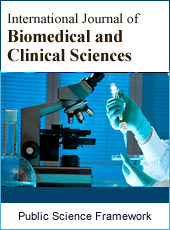International Journal of Biomedical and Clinical Sciences
Articles Information
International Journal of Biomedical and Clinical Sciences, Vol.4, No.3, Sep. 2019, Pub. Date: Nov. 4, 2019
Enhancing Post-market Surveillance Through Laboratory Testing on Blue-green Algae Products in Malaysia
Pages: 88-96 Views: 2442 Downloads: 684
[01]
Bujang Nur Baizura, National Pharmaceutical Regulatory Agency (NPRA), Ministry of Health, Petaling Jaya, Malaysia.
[02]
Shamsuddin Noor’ain, National Pharmaceutical Regulatory Agency (NPRA), Ministry of Health, Petaling Jaya, Malaysia.
[03]
Muhamad Muhammad Zhariff, National Pharmaceutical Regulatory Agency (NPRA), Ministry of Health, Petaling Jaya, Malaysia.
[04]
Zahari Siti Hajar, National Pharmaceutical Regulatory Agency (NPRA), Ministry of Health, Petaling Jaya, Malaysia.
[05]
Shahrir Mohamed Shahrizan, National Pharmaceutical Regulatory Agency (NPRA), Ministry of Health, Petaling Jaya, Malaysia.
[06]
Gunasagaran Vinomalar, National Pharmaceutical Regulatory Agency (NPRA), Ministry of Health, Petaling Jaya, Malaysia.
[07]
Mohamed Ali Norleen, National Pharmaceutical Regulatory Agency (NPRA), Ministry of Health, Petaling Jaya, Malaysia.
[08]
Khoo Yvonne Siew Khoon, National Pharmaceutical Regulatory Agency (NPRA), Ministry of Health, Petaling Jaya, Malaysia.
[09]
Ghafar Zakiah Abdul, National Pharmaceutical Regulatory Agency (NPRA), Ministry of Health, Petaling Jaya, Malaysia.
Algal blooms present naturally in marine and fresh water ecosystems are harvested as ingredients in health supplement products. Blue-green algal supplements (BGAS) such as Aphanizomenon flos-aquae, can be contaminated with highly potent toxins, most common being microcystin-LR (MC-LR). Recently, the Pharmacovigilance Section of NPRA has received adverse drug reaction (ADR) reports including liver and kidney toxicities suspected to be related to products containing Aphanizomenon flos-aquae in the local market. The objectives of this study were: (1) to develop and validate a MC-LR quantification test method and (2) to use quality control test results as a complement to managing product safety issues. During investigation on ADR reports concerning Aphanizomenon flos-aquae products, samples obtained through ADR reporting and market surveillance were used to develop and validate a test based on liquid chromatography-tandem mass spectrometry (LC-MS/MS) system. Testing results have been applied to supplement other investigational activities which together support follow-up regulatory actions on the ADR reports received by NPRA. This research report illustrates an example in which a test method developed in-house can serve to supplement other regulatory components in handling product safety issues.
Microcystin-LR, Aphanizomenon flos-aquae, Test Method Development, Adverse Drug Reaction, Complementary and Alternative Medicinal Products
[01]
Die D and Hoeger S (2005) Guidance values for microcystins in water and cyanobacterial supplement products (blue-green algal supplements): a reasonable or misguided approach? Toxicology and Applied Pharmacology, 203: 273–289.
[02]
Niedermeyer T. (2014) Microcystin congeners described in the literature. Figshare. Dataset. Available at: https://figshare.com/articles/_Microcystin_congeners_described_in_the_literature/880756.
[03]
OEHHA (2009) Microcystins:
a brief overview of their toxicity and effects, with special reference to fish, wildlife, and livestock. California.
[04]
Gilroy DJ, Kauffman KW, Hall RA, Huang X and Chu FS (2000) Assessing potential health risks from microcystin toxins in blue-green algae dietary supplements. Environ Health Perspect, 108: 435439.
[05]
Business Wire (2018). Technavio Expects the Health Supplement Market in Malaysia to Surpass USD 6 billion by 2019. 29 February 2016. Available at: https://www.businesswire.com/news/home/20160229006056/en/Technavio-Expects-Health-Supplement-Market-Malaysia-Surpass.
[06]
David A (2018). Malaysia taps into RM5bil microalgae market. News Straits Times, 28 August 2018. Available at: https://www.nst.com.my/news/nation/2018/08/405765/malaysia-taps-rm5bil-microalgae-market.
[07]
Gantar M and Svircev Z (2008) Microalgae and cyanobacteria: food for thought. J. Phycololy, 44: 260–268.
[08]
Health Canada (2016) Cyanobacterial toxins in drinking water. Available at: http://healthycanadians.gc.ca/health-system-systeme-sante/consultations/cyanobacteria-cyanobacterie/alt/cyanobacteria-cyanobacterie-eng.pdf.
[09]
NPRA. (2018) Drug registration guidance document, 1st Ed. (revised March 2015). Available at: https://www.npra.gov.my/index.php/drug-registration-guidance-document-drgd.
[10]
WHO (2003) Cyanobacterial toxins: Microcystin-LR in Drinking-water. Background document for development of WHO Guidelines for Drinking-water Quality. Available at: https://www.who.int/water_sanitation_health/dwq/chemicals/cyanobactoxins.pdf.
[11]
Lone Y, Koiri RK, Bhide M (2015) An overview of the toxic effect of potential human carcinogen Microcystin-LR on testis. Toxicology Reports, 2: 289–296.
[12]
Chu FS, Huang X and Wei RD (1990) Enzyme-linked immunosorbent assay for microcystins in blue-green algal blooms. J Assoc Off Annal Chem, 73 (3): 451-6.
[13]
Heussner AH, Mazija L, Fastner L, Dietrich DR (2012) Toxin content and cytotoxicity of algal dietary supplements. Toxicology and Applied Pharmacology, 265: 263–271.
[14]
Marsan DW, Conrad SM, Stutts WL, Parker CH and Deeds JR (2018). Evaluation of microcystin contamination in blue-green algal dietary supplements using a protein phosphatase inhibition-based test kit. Heliyon, 4 (3): E00573.
[15]
Parker CH, Stutts WL, DeGrasse SL (2015) Development and Validation of a Liquid Chromatography- Tandem Mass Spectrometry Method for the Quantitation of Microcystins in Blue-Green Algal Dietary Supplements. J of Agricultural and Food Chemistry, 15 October 2015 (online).
[16]
Roy-Lachapelle A, Solliec M, Bouchard M and Sauvé S (2017). Detection of Cyanotoxins in Algae Dietary Supplements. Toxins, 9 (3): E76.
[17]
Lawton LA, Edwards C (2001) Purifications of microcystins. Journal of Chromatography A, 912: 191-209.
[18]
ICH (1996) Validation of analytical procedures: text and methodology Q2 (R1). Available at: https://www.ich.org/fileadmin/Public_Web_Site/ICH_Products/Guidelines/Quality/Q2_R1/Step4/Q2_R1__Guideline.pdf.

ISSN Print: Pending
ISSN Online: Pending
Current Issue:
Vol. 7, Issue 1, March Submit a Manuscript Join Editorial Board Join Reviewer Team
ISSN Online: Pending
Current Issue:
Vol. 7, Issue 1, March Submit a Manuscript Join Editorial Board Join Reviewer Team
| About This Journal |
| All Issues |
| Open Access |
| Indexing |
| Payment Information |
| Author Guidelines |
| Review Process |
| Publication Ethics |
| Editorial Board |
| Peer Reviewers |


